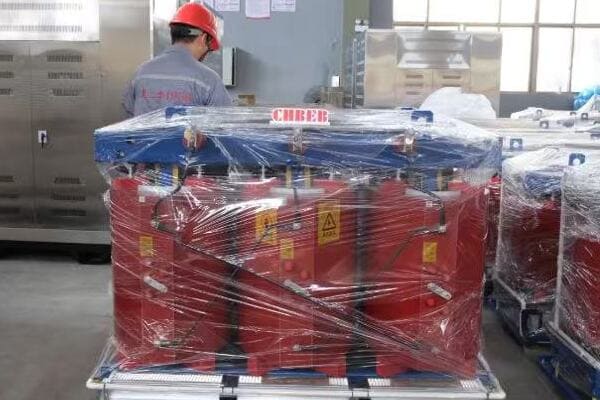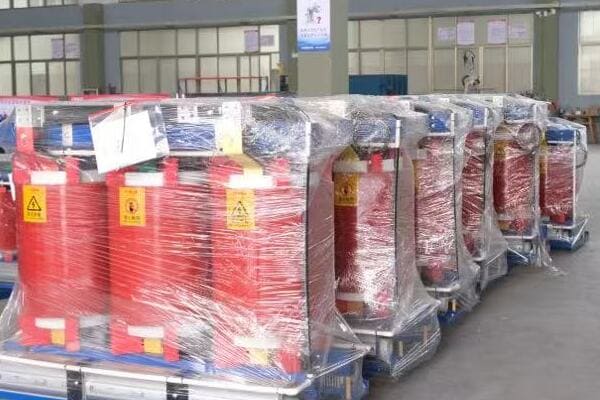What Is a Utility Transformer? Definition, Function, and Key Features?
Have you ever wondered how electricity from power plants reaches your home safely? The answer lies in a crucial piece of equipment called a utility transformer. But what exactly is a utility transformer, and why is it so important?
A utility transformer is a type of electrical transformer used by power companies to reduce high voltage electricity from transmission lines to lower voltages suitable for local distribution. It plays a vital role in the power grid by making electricity safe and usable for homes and businesses.
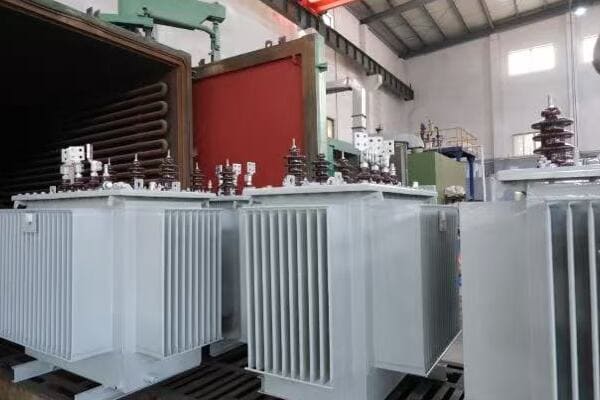
In this article, I’ll explain what utility transformers are, how they function, and their key features. Whether you’re a curious homeowner or an aspiring engineer, understanding these devices will give you valuable insights into how our power grid works.
Introduction: Why Utility Transformers Are Crucial to Public Grids?
Have you ever stopped to think about the journey electricity takes from a power plant to your home? It’s a complex process, and at the heart of it all are utility transformers. But why are these devices so essential to our public power grids?
Utility transformers are crucial because they enable the efficient transmission and distribution of electricity across vast distances. They step down high voltages used for long-distance transmission to lower, safer voltages for local use. Without them, delivering electricity to homes and businesses would be impractical and dangerous.
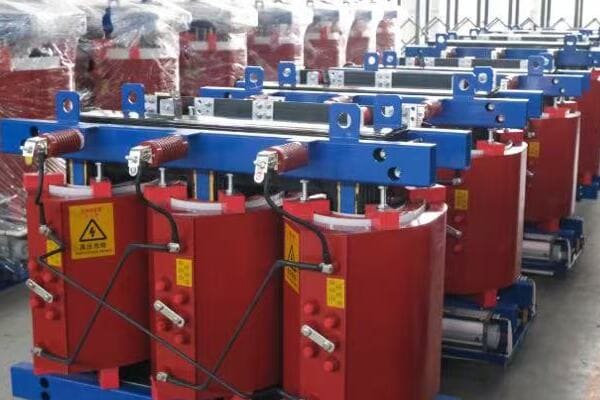
The Critical Role of Utility Transformers
Let’s explore why utility transformers are so important:
1. Efficient Power Transmission
Utility transformers allow for:
- High voltage transmission over long distances
- Reduced power losses during transmission
- Economical electricity distribution
I once visited a large substation where I saw massive utility transformers in action. It was fascinating to see how these devices could take in electricity at hundreds of thousands of volts and output it at levels safe for neighborhood use.
2. Safety in Power Distribution
These transformers ensure:
- Voltage reduction for safe household use
- Isolation between high voltage lines and local networks
- Protection against voltage surges
3. Flexibility in Power Systems
Utility transformers provide:
- Ability to interconnect different voltage systems
- Support for various distribution configurations
- Adaptability to changing load demands
4. Grid Stability
They contribute to:
- Voltage regulation in the distribution network
- Power factor correction
- Harmonics mitigation
Here’s a table showing the typical voltage levels in power systems:
| Stage | Voltage Level | Transformer Role |
|---|---|---|
| Generation | 10-25 kV | Step-up for transmission |
| Transmission | 100-765 kV | Long-distance power transfer |
| Sub-transmission | 33-160 kV | Regional distribution |
| Distribution | 4-33 kV | Local area supply |
| Consumer | 120/240 V | Final step-down for use |
In my experience, the importance of utility transformers often goes unnoticed until something goes wrong. I recall a project where a major utility transformer failed in a suburban area. The resulting blackout affected thousands of homes and businesses, highlighting how crucial these devices are to our daily lives.
One fascinating aspect of utility transformers is their role in renewable energy integration. In a recent solar farm project, I worked on designing the interface between the solar array and the grid. The utility transformers we used had to be specially designed to handle the variable output of solar panels while maintaining grid stability.
The challenge of balancing efficiency and reliability in utility transformer design is ongoing. I’ve been involved in projects implementing new core materials that reduce energy losses. While these advanced materials can significantly improve efficiency, they often come with higher upfront costs. It’s a constant balance between long-term energy savings and initial investment.
Utility transformers also play a crucial role in smart grid technologies. In a recent modernization project, we integrated advanced monitoring and control systems into utility transformers. These smart transformers can now communicate real-time data about power quality and loading, allowing for more efficient grid management and faster response to potential issues.
The environmental impact of utility transformers is an increasingly important consideration. I’ve worked on projects to replace old oil-filled transformers with more environmentally friendly dry-type units in urban substations. While this transition presents technical challenges, it significantly reduces the risk of oil spills and environmental contamination.
Lastly, the resilience of utility transformers in extreme weather conditions is becoming a critical focus. In a recent project in a hurricane-prone area, we designed a substation with specially reinforced transformer enclosures and advanced cooling systems to withstand severe weather events. This kind of forward-thinking design is essential as we face increasing climate-related challenges to our power infrastructure.
Understanding the crucial role of utility transformers in public grids is key to appreciating the complexity and reliability of our power systems. These devices, often hidden in plain sight, are the unsung heroes that make our modern, electrified world possible. As we continue to evolve our energy infrastructure, the importance of utility transformers in ensuring efficient, safe, and reliable power distribution will only grow.
Core Function: Voltage Step-Down for Distribution?
Have you ever wondered how the massive amount of electricity generated at power plants becomes usable in your home? The key lies in the core function of utility transformers: voltage step-down. But how exactly does this process work, and why is it so important?
The core function of a utility transformer is to step down high voltage electricity from transmission lines to lower voltages suitable for local distribution. This process involves reducing voltages from tens or hundreds of thousands of volts to levels that can be safely used in homes and businesses, typically 120/240 volts in residential areas.
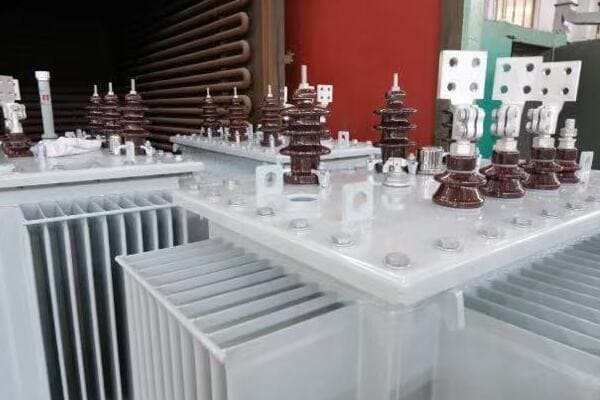
Understanding Voltage Step-Down in Utility Transformers
Let’s explore the voltage step-down process in detail:
1. Basic Principle
How step-down works:
- Uses electromagnetic induction
- Relies on the ratio of primary to secondary windings
- Decreases voltage while increasing current
I remember the first time I saw a large utility transformer being tested. The way it could take in 69,000 volts and output 12,000 volts seemed almost magical, despite knowing the physics behind it.
2. Stages of Voltage Reduction
Typical voltage reduction stages:
- Transmission to sub-transmission (e.g., 345kV to 69kV)
- Sub-transmission to distribution (e.g., 69kV to 12kV)
- Distribution to consumer level (e.g., 12kV to 120/240V)
3. Importance of Step-Down
Why it’s crucial:
- Makes electricity safe for end-use
- Allows for efficient long-distance transmission
- Enables the use of standard electrical equipment
4. Efficiency Considerations
Factors affecting efficiency:
- Core losses (hysteresis and eddy currents)
- Copper losses in windings
- Cooling system effectiveness
Here’s a table showing typical voltage step-down stages:
| Stage | Input Voltage | Output Voltage | Typical Location |
|---|---|---|---|
| Primary Step-Down | 345 kV | 69 kV | Main Substation |
| Secondary Step-Down | 69 kV | 12 kV | Distribution Substation |
| Final Step-Down | 12 kV | 120/240 V | Neighborhood Transformer |
In my experience, the efficiency of the step-down process is crucial for overall power system performance. I once worked on a project to upgrade an aging substation. By replacing old transformers with modern, more efficient models, we were able to reduce energy losses by nearly 30%. This not only saved money but also reduced the environmental impact of power distribution.
One fascinating aspect of voltage step-down is how it’s adapted for different environments. In a recent project for a dense urban area, we had to design a compact substation that could handle multiple step-down stages in a limited space. This required innovative thinking in transformer design and layout to ensure efficient cooling and safe operation in a confined area.
The challenge of maintaining voltage stability during step-down is ongoing. I’ve been involved in implementing advanced voltage regulation systems in utility transformers. These systems can dynamically adjust the output voltage based on load conditions, ensuring consistent power quality for consumers even as demand fluctuates throughout the day.
Harmonics management is another critical consideration in the step-down process. In industrial areas with many non-linear loads, harmonics can cause heating and efficiency issues in transformers. I’ve worked on designing specialized transformers with harmonic mitigation features, such as K-factor ratings, to handle these challenging environments more effectively.
The integration of renewable energy sources has introduced new challenges in voltage step-down. In a recent wind farm project, we had to design transformers that could handle the variable output of wind turbines while still providing stable voltage to the grid. This required careful consideration of tap changing mechanisms and reactive power compensation.
Safety is paramount in the step-down process. I’ve been involved in developing advanced protection schemes for utility transformers. These include rapid detection of faults and automatic isolation to prevent cascading failures in the grid. In one memorable case, this system prevented a potentially catastrophic failure during a severe lightning storm.
Lastly, the environmental impact of step-down transformers is an increasing concern. I’m currently working on a project to develop more environmentally friendly insulating materials for transformers. This includes exploring alternatives to traditional mineral oil that offer better fire resistance and biodegradability, without compromising on performance.
Understanding the core function of voltage step-down in utility transformers is crucial for appreciating how our power grid operates. This process, while seemingly simple, involves complex engineering to ensure efficiency, reliability, and safety. As our power needs evolve, particularly with the growth of renewable energy and smart grid technologies, the role of these transformers in stepping down voltage will remain critical to our electrical infrastructure.
Who Uses Utility Transformers: Utilities, Co-ops, Municipalities?
Have you ever wondered who’s responsible for the transformers you see in your neighborhood? While we often take them for granted, utility transformers are managed by various entities. But who exactly uses and maintains these crucial pieces of our power infrastructure?
Utility transformers are primarily used by electric utility companies, rural electric cooperatives, and municipal power departments. These organizations are responsible for installing, maintaining, and operating the transformers that step down high voltage electricity for distribution to homes, businesses, and other end-users in their service areas.
Exploring the Users of Utility Transformers
Let’s break down the main entities that use utility transformers:
1. Electric Utility Companies
Large-scale operators:
- Serve vast geographic areas
- Often investor-owned corporations
- Manage complex grid systems
I once toured a major utility company’s control center. The scale of their operations was impressive, with hundreds of transformers being monitored in real-time across an entire state.
2. Rural Electric Cooperatives
Community-focused providers:
- Serve less populated areas
- Member-owned organizations
- Often cover extensive, rural territories
3. Municipal Power Departments
Local government entities:
- Serve specific cities or towns
- Publicly owned and operated
- Often focus on community needs and local control
4. Industrial Users
In some cases:
- Large factories or campuses
- May own and operate their own substations
- Require specialized high-voltage equipment
Here’s a comparison table of different utility transformer users:
| User Type | Typical Service Area | Ownership | Transformer Responsibilities |
|---|---|---|---|
| Utility Companies | Large regions/states | Investor-owned | Full lifecycle management |
| Electric Co-ops | Rural areas | Member-owned | Installation and maintenance |
| Municipalities | Cities/towns | Public | Local distribution and upkeep |
| Industrial Users | Private property | Private | On-site high-voltage management |
In my experience, the approach to transformer management can vary significantly between these entities. I recall a project where we worked with both a large utility company and a small rural cooperative. The utility had a sophisticated asset management system for their transformers, while the co-op relied more on local knowledge and a hands-on approach. Both were effective in their contexts, but the contrast was striking.
One interesting aspect of utility transformer usage is how it’s evolving with the growth of renewable energy. I’ve been involved in projects where traditional utilities are partnering with solar and wind farm operators. This collaboration requires careful planning of transformer placement and capacity to handle the variable nature of renewable sources.
The challenge of maintaining aging transformer infrastructure is a common theme across all types of users. In a recent consultation with a municipal power department, we developed a phased replacement plan for transformers that were over 40 years old. This involved balancing budget constraints with the need for reliable service, a common challenge for smaller operators.
Smart grid integration is another area where I’ve seen differences in approach among transformer users. Large utilities often lead in implementing advanced monitoring and control systems for their transformers. However, I’ve also worked with forward-thinking cooperatives and municipalities that are adopting these technologies to improve reliability and efficiency.
Emergency response and disaster preparedness are crucial aspects of transformer management. I once assisted a coastal utility in developing a resilience plan for their transformer network to withstand hurricane conditions. This included strategies for rapid deployment of mobile transformers and hardening of critical substations.
The role of public engagement varies among different transformer users. Municipal power departments, in my experience, often have more direct community involvement in their planning processes. I’ve facilitated public meetings where residents could provide input on substation locations and transformer aesthetics, something less common with larger utilities.
Lastly, the trend towards grid modernization is affecting all types of transformer users. I’m currently involved in a project helping a consortium of smaller utilities and cooperatives upgrade their transformer fleets to support electric vehicle charging infrastructure. This collaborative approach allows smaller entities to implement advanced technologies that might otherwise be out of reach.
Understanding who uses utility transformers provides insight into the complex ecosystem of our power grid. From large utility companies managing vast networks to small municipalities serving local communities, each plays a crucial role in ensuring reliable electricity distribution. As our energy landscape continues to evolve, the diverse users of utility transformers will face new challenges and opportunities in maintaining and improving our electrical infrastructure.
Common Features: Mounting Type, Cooling, Ratings?
Have you ever looked at a utility transformer and wondered about its design features? While these devices may seem simple from the outside, they incorporate various important elements. But what are the common features that make utility transformers effective and reliable?
Common features of utility transformers include different mounting types (pole-mounted, pad-mounted, or substation-type), cooling systems (oil-immersed or dry-type), and specific ratings for voltage, power capacity, and efficiency. These features are crucial for ensuring proper operation, safety, and longevity in various environmental conditions.
Exploring Key Features of Utility Transformers
Let’s delve into the common features of utility transformers:
1. Mounting Types
Various installation methods:
- Pole-mounted: Common in residential areas
- Pad-mounted: Used in underground distribution systems
- Substation-type: Large, ground-based units for major substations
I remember a project where we had to decide between pole-mounted and pad-mounted transformers for a new residential development. We chose pad-mounted units for their aesthetic appeal and reduced vulnerability to weather, despite the higher initial cost.
2. Cooling Systems
Methods to manage heat:
- Oil-immersed: Uses insulating oil for cooling and insulation
- Dry-type: Air-cooled, often used indoors
- Forced-air cooling: For higher capacity units
3. Voltage Ratings
Specifications for input and output voltages:
- Primary voltage: Typically high voltage input
- Secondary voltage: Stepped-down output for distribution
- Tap changers: Allow for voltage adjustment
4. Power Capacity Ratings
Measured in kVA (kilovolt-amperes):
- Ranges from small 10 kVA units to massive 100 MVA substation transformers
- Determines the load the transformer can handle
Here’s a table summarizing common features of utility transformers:
| Feature | Options | Typical Applications |
|---|---|---|
| Mounting | Pole-mounted | Overhead distribution |
| Pad-mounted | Underground residential | |
| Substation-type | Major power substations | |
| Cooling | Oil-immersed | High capacity, outdoor use |
| Dry-type | Indoor, environmentally sensitive areas | |
| Voltage Rating | 4.16kV/240-120V | Residential distribution |
| 69kV/12.47kV | Sub-transmission to distribution | |
| Power Capacity | 25-100 kVA | Residential/small commercial |
| 500-2000 kVA | Large commercial/small industrial | |
| 10-100 MVA | Substation transformers |
In my experience, selecting the right combination of features is crucial for optimal transformer performance. I once worked on a project in a coastal area where we had to carefully consider the cooling system. The salt air posed a corrosion risk, so we opted for sealed, oil-immersed units with special corrosion-resistant coatings.
The choice of mounting type can significantly impact maintenance and reliability. In a recent urban renewal project, we replaced old pole-mounted transformers with pad-mounted units. This not only improved the streetscape aesthetics but also made maintenance easier and safer for utility workers.
One fascinating aspect of transformer cooling is how it affects the unit’s capacity. I’ve been involved in projects where we upgraded the cooling systems of existing transformers to increase their power handling capability. In one case, adding forced-air cooling to an oil-immersed transformer allowed us to increase its rating by 25% without replacing the entire unit.
Voltage ratings and tap changers play a crucial role in grid stability. I recall a project where we implemented on-load tap changers in distribution transformers for a area with high solar penetration. This allowed for dynamic voltage adjustment to handle the fluctuations caused by variable solar output, improving overall power quality for consumers.
The trend towards more compact and efficient transformers is driving innovation in core materials and winding designs. I’m currently working on a project using amorphous metal cores, which can reduce no-load losses by up to 70% compared to traditional silicon steel cores. While more expensive initially, these transformers offer significant energy savings over their lifetime.
Environmental considerations are increasingly influencing transformer design features. In a recent project for an environmentally sensitive area, we used biodegradable ester fluids instead of mineral oil for transformer insulation and cooling. This reduced the environmental risk in case of leaks and improved the fire safety of the installation.
The integration of smart grid features is another evolving aspect of utility transformer design. I’ve been involved in implementing transformers with built-in monitoring systems that can report real-time data on load, temperature, and oil condition. This allows for predictive maintenance and more efficient grid management.
Seismic considerations are crucial in certain regions. I worked on a project in an earthquake-prone area where we had to design special mounting systems for pad-mounted transformers. These included flexible connections and reinforced pads to withstand seismic events without causing oil leaks or electrical failures.
Noise reduction is becoming an important feature, especially in urban environments. In a recent residential substation project, we implemented specially designed low-noise transformers with additional sound insulation. This helped in meeting strict local noise ordinances and improving quality of life for nearby residents.
The challenge of balancing cost, efficiency, and reliability in transformer design is ongoing. I’ve been involved in developing total cost of ownership models that consider not just the initial purchase price, but also energy losses, maintenance costs, and expected lifespan. This holistic approach often justifies the use of higher-quality, more efficient transformers in the long run.
Lastly, the adaptability of transformers to handle reverse power flow is becoming crucial with the rise of distributed generation. In a recent microgrid project, we specified transformers that could handle bi-directional power flow to accommodate both traditional loads and local solar generation. This required careful consideration of winding design and protection systems.
Understanding the common features of utility transformers – from mounting types and cooling systems to voltage ratings and capacity – is essential for anyone involved in power distribution. These features not only determine the transformer’s performance and longevity but also its suitability for specific applications and environments. As our power needs continue to evolve, particularly with the integration of renewable energy and smart grid technologies, the design and features of utility transformers will undoubtedly continue to advance to meet these new challenges.
Utility Transformer vs Commercial Transformer: What’s the Difference?
Have you ever wondered why the transformers you see on utility poles look different from those inside buildings? The distinction between utility and commercial transformers is significant, but what exactly sets them apart?
Utility transformers are designed for outdoor use in power distribution networks, handling higher voltages and larger loads. Commercial transformers, in contrast, are typically used inside buildings for further voltage reduction and specific load applications. The key differences lie in their size, voltage ratings, mounting, and intended use in the power distribution chain.
Comparing Utility and Commercial Transformers
Let’s explore the key differences between these two types of transformers:
1. Size and Capacity
Differences in scale:
- Utility transformers: Generally larger, handling higher power loads
- Commercial transformers: Smaller, designed for building-specific needs
I once worked on a project where we replaced several small commercial transformers with a single, larger utility transformer. The efficiency gains and simplified maintenance were significant.
2. Voltage Ratings
Typical voltage levels:
- Utility transformers: Step down from high voltage (e.g., 69kV to 12kV)
- Commercial transformers: Further step down (e.g., 480V to 208Y/120V)
3. Mounting and Location
Where they’re installed:
- Utility transformers: Outdoor pole-mounted, pad-mounted, or in substations
- Commercial transformers: Indoor installation, often in electrical rooms
4. Ownership and Maintenance
Who’s responsible:
- Utility transformers: Owned and maintained by power companies
- Commercial transformers: Owned and maintained by building owners
Here’s a comparison table of utility and commercial transformers:
| Feature | Utility Transformer | Commercial Transformer |
|---|---|---|
| Typical Size | Large (often > 500 kVA) | Smaller (typically < 500 kVA) |
| Voltage Levels | Primary: 4kV-69kV, Secondary: 120V-34.5kV | Primary: 480V-34.5kV, Secondary: 120V-480V |
| Location | Outdoors | Indoors |
| Cooling | Often oil-filled | Usually dry-type |
| Ownership | Utility company | Building owner |
| Main Purpose | Power distribution to multiple customers | Serve specific building or facility |
In my experience, the distinction between utility and commercial transformers often becomes blurred in large industrial settings. I recall a project for a major manufacturing plant where we installed utility-scale transformers on the customer’s property. While technically "commercial," these units were more akin to utility transformers in size and voltage ratings.
One interesting aspect of the utility vs. commercial transformer comparison is their approach to efficiency. Utility transformers often prioritize long-term efficiency due to their continuous operation. I’ve been involved in projects implementing amorphous core utility transformers, which have higher upfront costs but significantly lower energy losses over time. Commercial transformers, with their more intermittent use, may not always justify such high-efficiency designs.
The environmental considerations also differ between these transformer types. In a recent urban development project, we had to carefully consider the use of oil-filled utility transformers due to environmental risks. We opted for dry-type designs in some areas, which are more commonly seen in commercial applications, to mitigate potential oil spill concerns.
Maintenance practices vary significantly between utility and commercial transformers. I’ve developed maintenance programs for both types, and the differences are striking. Utility transformers often have more robust monitoring systems and undergo more frequent inspections due to their critical role in power distribution. Commercial transformers, while important, typically have simpler maintenance routines.
The impact of smart grid technologies is another area where utility and commercial transformers diverge. I’m currently working on a project integrating advanced monitoring and control features into utility transformers. These smart capabilities allow for real-time load management and predictive maintenance, features that are less common in standard commercial transformers.
Reliability and redundancy considerations also differ. In utility transformer applications, I’ve often implemented N+1 redundancy schemes to ensure continuous power supply even if one transformer fails. Commercial settings rarely require this level of redundancy, except in critical applications like data centers or hospitals.
The trend towards renewable energy integration is affecting both utility and commercial transformers, but in different ways. For utility transformers, I’ve been involved in designing units that can handle bi-directional power flow from large solar or wind farms. Commercial transformers are increasingly being adapted to work with smaller-scale renewable systems like rooftop solar panels.
Lastly, the regulatory environment for utility and commercial transformers can be quite different. Utility transformers are often subject to stricter efficiency standards and reliability requirements set by regulatory bodies. I’ve had to navigate these complex regulations in utility transformer projects, ensuring compliance with both technical and environmental standards.
Understanding the differences between utility and commercial transformers is crucial for proper power system design and management. While both serve the essential function of voltage transformation, their distinct roles in the power distribution chain necessitate different design approaches, maintenance strategies, and operational considerations. As our power needs continue to evolve, particularly with the growth of renewable energy and smart grid technologies, the distinctions between these transformer types may continue to evolve as well.
Summary: Making the Grid Accessible
Have you ever paused to consider how the vast, complex power grid becomes accessible to everyday users? The key lies in utility transformers, but how exactly do these devices make our modern, electrified life possible?
Utility transformers make the grid accessible by stepping down high transmission voltages to levels safe for local distribution and use. They bridge the gap between power generation and consumption, enabling efficient long-distance power transmission while providing safe, usable electricity to homes and businesses.

The Role of Utility Transformers in Grid Accessibility
Let’s recap how utility transformers make the grid accessible:
1. Voltage Step-Down
Crucial for usability:
- Reduces high transmission voltages to distribution levels
- Enables safe use of electricity in homes and businesses
- Allows for standardization of consumer electrical equipment
Throughout my career, I’ve seen how critical this step-down process is. I once worked on a project to upgrade a rural substation, and the transformation from 138kV to 12.47kV was what allowed an entire community to access reliable power.
2. Efficient Power Distribution
Enables widespread access:
- Facilitates long-distance power transmission
- Reduces power losses in distribution
- Allows for flexible grid configurations
3. Safety and Isolation
Protects end-users:
- Provides electrical isolation from high voltage systems
- Incorporates safety features like fuses and circuit breakers
- Enables grounding for additional protection
4. Adaptability to Demand
Responds to user needs:
- Can be sized appropriately for different load requirements
- Allows for load growth and system expansion
- Facilitates integration of new power sources like renewables
Here’s a table summarizing how utility transformers make the grid accessible:
| Aspect | Function | Benefit to Users |
|---|---|---|
| Voltage Reduction | Steps down high voltage to usable levels | Safe electricity in homes and businesses |
| Power Quality | Maintains stable voltage and frequency | Reliable operation of electrical devices |
| Distribution Efficiency | Minimizes losses in power delivery | Cost-effective electricity supply |
| Safety Features | Provides isolation and protection | Reduced risk of electrical accidents |
| Scalability | Allows for system growth and adaptation | Meets evolving community power needs |
In my experience, the role of utility transformers in making the grid accessible goes beyond just technical specifications. I recall a project in a developing area where the installation of a new substation with modern utility transformers literally brought power to a community for the first time. The impact on daily life, from lighting to refrigeration to communication, was profound.
One fascinating aspect of grid accessibility is how utility transformers enable the integration of diverse power sources. In a recent renewable energy project, I worked on designing transformer systems that could handle the variable input from wind and solar sources while still providing stable output to consumers. This adaptability is crucial as we transition to more sustainable energy systems.
The challenge of maintaining grid accessibility in the face of increasing demand is ongoing. I’ve been involved in projects implementing smart transformer technologies that can dynamically adjust to load changes and communicate with grid management systems. This real-time adaptability helps prevent overloads and ensures consistent power quality, even as our energy needs grow and change.
Reliability is a key factor in true grid accessibility. I once led a project to improve the resilience of a coastal power network prone to storm damage. By strategically placing and protecting utility transformers, we significantly reduced outage times during extreme weather events, ensuring more consistent access to power for the community.
The role of utility transformers in supporting grid modernization efforts is significant. I’m currently working on a project integrating advanced metering infrastructure with distribution transformers. This combination allows for more granular load management and can even support demand response programs, making the grid more efficient and responsive to user needs.
Energy equity is an important consideration in grid accessibility. In urban renewal projects, I’ve seen how the strategic placement and sizing of utility transformers can help ensure equitable power distribution across different neighborhoods. This thoughtful planning is crucial for providing fair access to reliable electricity for all community members.
Lastly, the educational aspect of grid accessibility shouldn’t be overlooked. I’ve been involved in community outreach programs explaining how utility transformers work and their role in bringing power to homes. This understanding helps foster appreciation for the complex infrastructure that makes our electrified lives possible and can encourage more responsible energy use.
Utility transformers play a vital role in making the vast and complex power grid accessible to everyday users. By stepping down voltages, ensuring safety, enabling efficient distribution, and adapting to changing needs, these devices form a critical link between power generation and consumption. As we continue to evolve our energy systems, the role of utility transformers in maintaining and improving grid accessibility will remain crucial, ensuring that safe, reliable, and efficient power remains available to all.
Conclusion
Utility transformers are essential components of the power grid, stepping down high voltages for safe distribution to end-users. They come in various types, with features tailored to different environments and needs. Understanding their function and characteristics is crucial for maintaining an efficient and reliable electrical infrastructure.
Free CHBEB Transformer Catalog Download
Get the full range of CHBEB transformers in one catalog.
Includes oil-immersed, dry-type, pad-mounted, and custom solutions.
Quick Message
Request A free quote
We'd like to work with you
- +86 15558785111
- [email protected]
- +86 15558785111
What We Do
CHINA BEI ER BIAN (CHBEB) GROUP, with 218 million in registered capital, originated from Beijing Beierbian Transformer Group. Headquartered in Beijing for R&D, it operates major production bases in Nanjing and Yueqing, producing high-quality products.
Latest Product
address
BeiJing
No 3,RongJing East Road,BeiJing Economic Technological Development Area,BeiJing,China
JiangSu
No 7️Xiangfeng Road,Jiangning,NanJing,JiangSu,China
WenZhou
No.211, Wei 16 Road, Industrial Zone, Yueqing, Wenzhou, Zhejiang, China.
XiangYang Industrial Zone ,YueQing,WenZhou,ZheJiang,China
contact us
- [email protected]
- +86 13057780111
- +86 13057780111
- +86 15558785111
Copyright © Bei Er Bian Group


